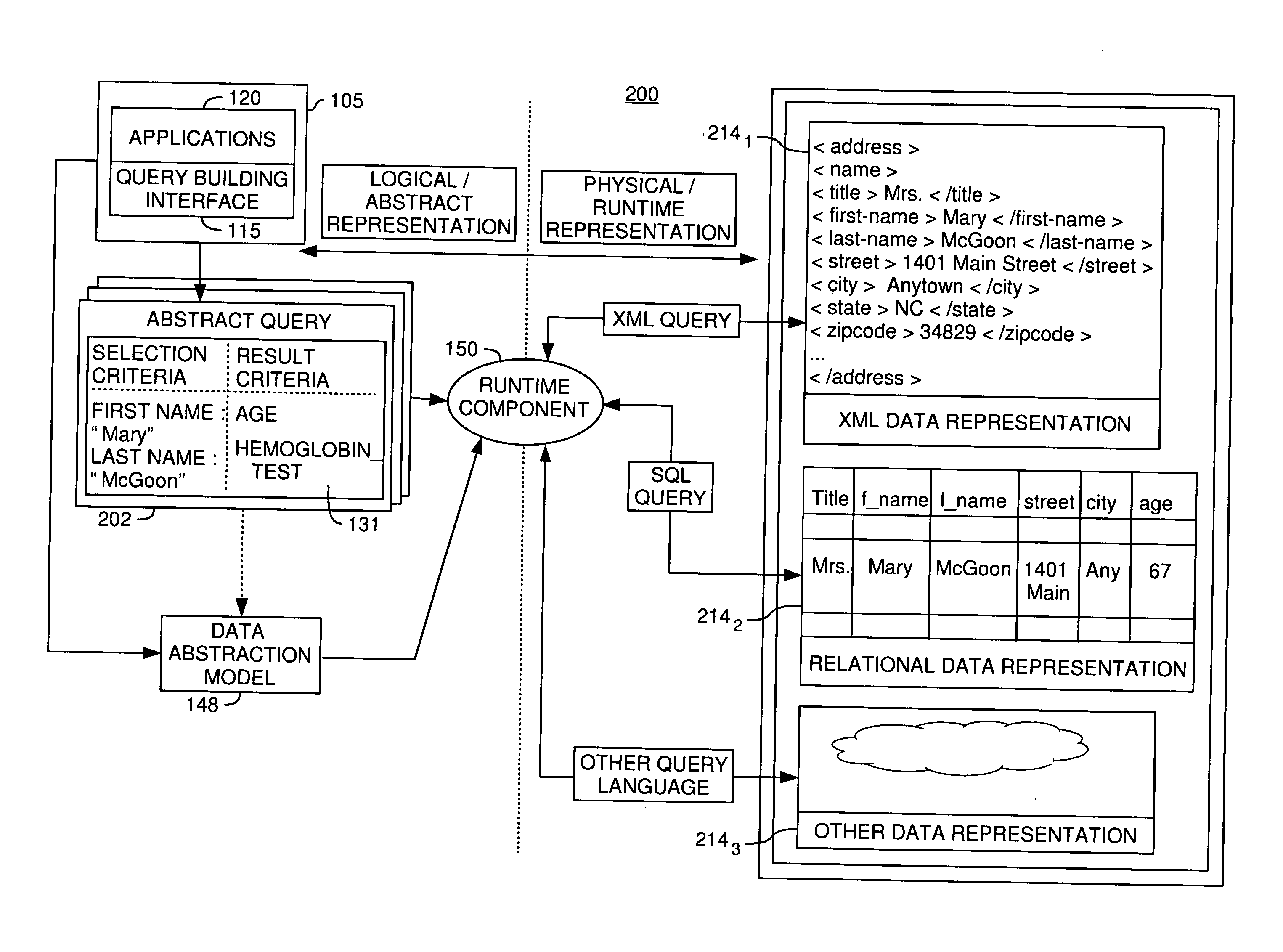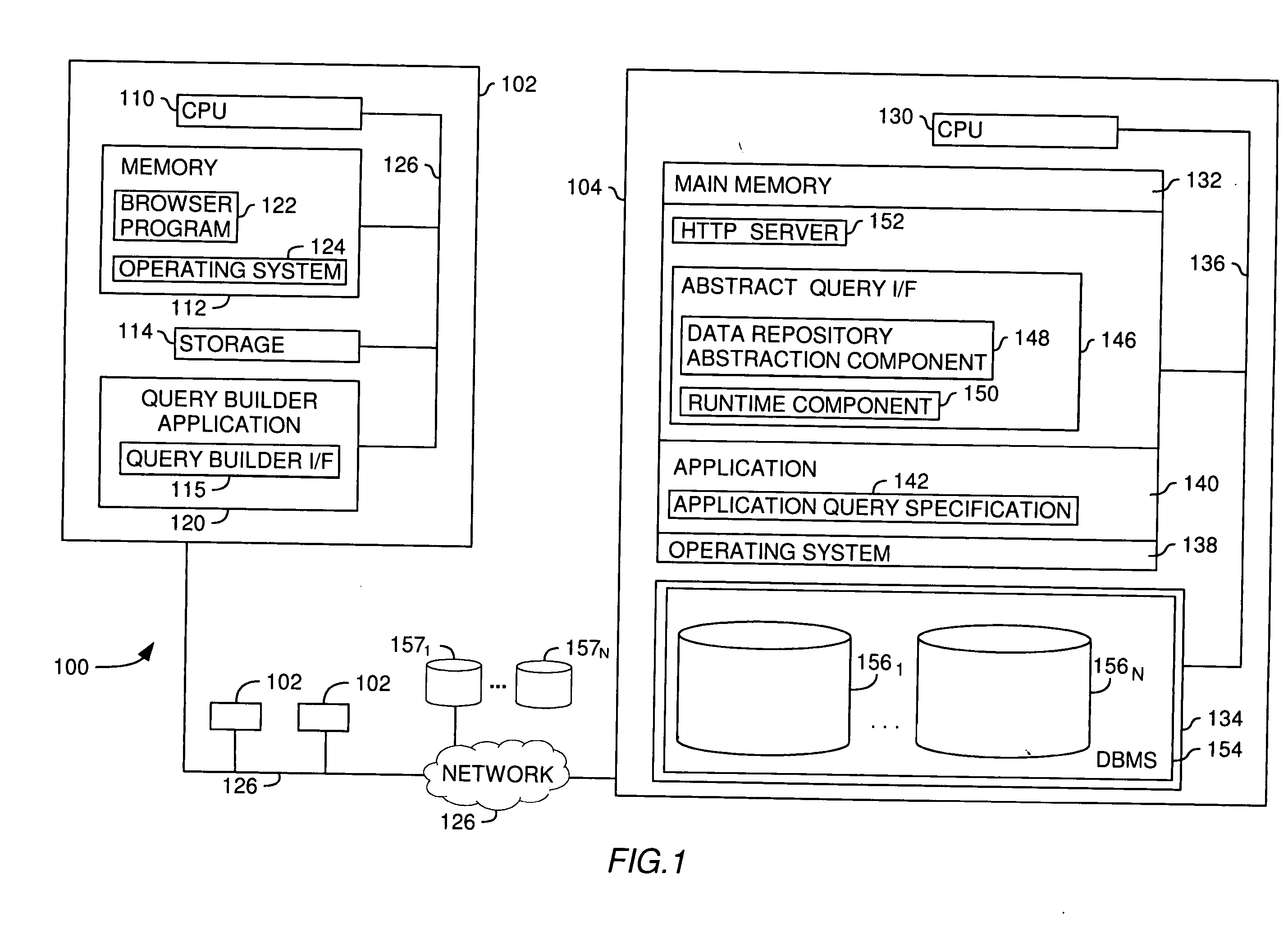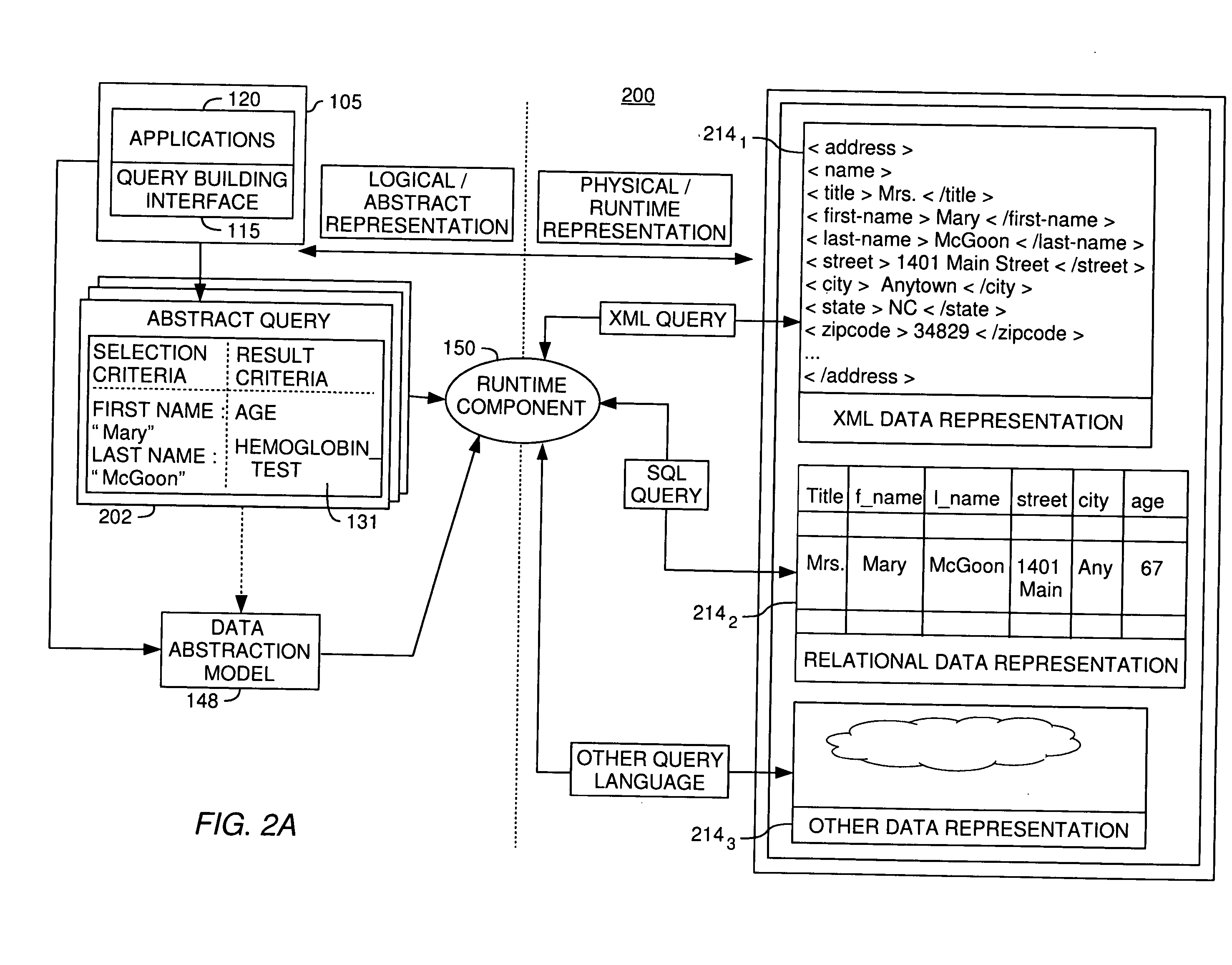Well organized query result sets
a query result and well-organized technology, applied in the field of data processing, can solve the problems of migrating the application to alternative underlying data representations, affecting the performance of the application, and affecting the quality of the query results,
- Summary
- Abstract
- Description
- Claims
- Application Information
AI Technical Summary
Problems solved by technology
Method used
Image
Examples
Embodiment Construction
[0026] Embodiments of the present invention provide methods, systems, and articles of manufacture used to create a set of well organized user results as part of processing an abstract query. In one embodiment, the abstract query is used to generate an intermediate representation of the abstract query, such as an abstract query plan. Generally, an abstract query plan includes a combination of both logical elements of from a data abstraction model, and physical elements from an underlying physical database system. This intermediate representation is used to generate a resolved query that may be executed against the underlying database.
[0027] In one embodiment, the abstract query plan may be used to generate multiple sub queries, or may be used to generate a single resolved query, and may also be used to construct a well organized results data structure. This data structure uses the intermediate representation to preserve one-to-one and one-to-many relationships between the data eleme...
PUM
 Login to View More
Login to View More Abstract
Description
Claims
Application Information
 Login to View More
Login to View More - R&D
- Intellectual Property
- Life Sciences
- Materials
- Tech Scout
- Unparalleled Data Quality
- Higher Quality Content
- 60% Fewer Hallucinations
Browse by: Latest US Patents, China's latest patents, Technical Efficacy Thesaurus, Application Domain, Technology Topic, Popular Technical Reports.
© 2025 PatSnap. All rights reserved.Legal|Privacy policy|Modern Slavery Act Transparency Statement|Sitemap|About US| Contact US: help@patsnap.com



